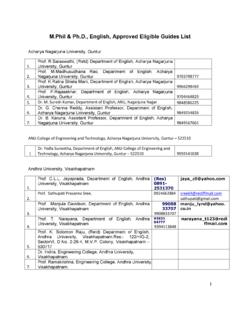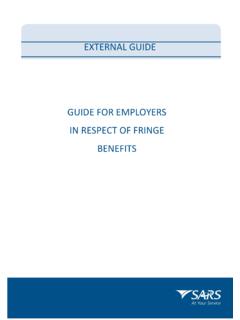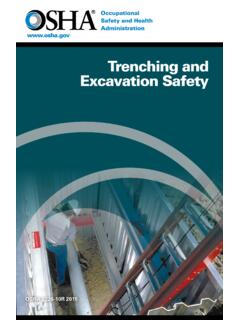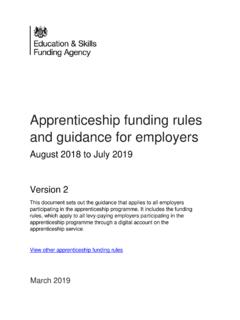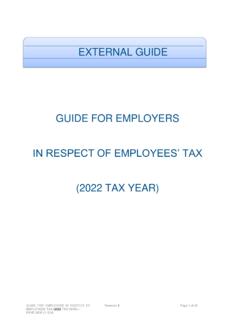Transcription of HUMAN RELATION THEORY - ELTON MAYO
1 1 ---------------------------------------- ---------------------------------------- ---------------------------------------- ------------- ANU ONLINE EDUCATION ACHARYA NAGARJUNA UNIVERSITY, NAGARJUNANAGAR, GUNTUR, ANDHRA PRADESH, INDIA-522510 Lesson 1 HUMAN RELATION THEORY - ELTON MAYO Structure: Objectives Introduction Early Experiments by ELTON Mayo HUMAN RELATION THEORY The investigations on Southern California Aircraft Industry The Effects of Hawthorne Experiments HUMAN relations School and Criticism Conclusion Model Questions References Objectives: 1. Students would know about the ELTON Mayo and his early life 2. Students would be able to know about the early experiments by Mayo 3.
2 Students would be able learn about HUMAN RELATION THEORY Introduction: George ELTON Mayo was born on 26 December 1880, and he died on 7 September 1949. He was an Australian Psychologist, Sociologist and organization theorist. He worked at the University of Queensland from 1911 to 1923, and later he moved to the University of Pennsylvania, however, he spent most of his career at Harvard Business School from1926 to1947, where he works as professor of industrial research. He was involved in study of psychopathology which in fact had played an important role to perform as an industrial researcher. ELTON Mayo is considered to be the father of HUMAN relations THEORY . His major works are in 1933, The HUMAN Problems of an Industrial Civilization , in 1945, The Social Problems of an Industrial Civilization , and in 1947, The Political Problem of Industrial Civilization.
3 2 ---------------------------------------- ---------------------------------------- ---------------------------------------- ------------- ANU ONLINE EDUCATION ACHARYA NAGARJUNA UNIVERSITY, NAGARJUNANAGAR, GUNTUR, ANDHRA PRADESH, INDIA-522510 Mayo is very famous as the forefather of the HUMAN relations Movement, and also recognised for his research which comprises of the Hawthorne Studies and his book The HUMAN Problems of an Industrialized Civilization was written in 1933 . In 1930s, under the Hawthorne, he conducted the research and it revealed the prominence of groups in affecting the behaviour of persons at work. He supported numerous research works to understand and find out the methods to increasethe productivity, for instance change in the condition of lighting at the workplace.
4 What he found was that the work satisfaction rest on to a greatamount on the casual social pattern of the work group. Anywherestandards for support and advancedyield were recognised because of a sense of significance, physical circumstances or financial motivations had little motivational value. People will practicelike work groups and this can be used by management to advantageof the organization. Early Experiments by ELTON Mayo: Similar to his other contemporaries, ELTON Mayo, also focussed thoughtfulness on issues related to the industrial labour in the factories, mainly on fatigue, accidents, production levels, rest periods, working conditions etc. in the year 1923, he initiated his research studies in a textile mill near Philadelphia, in the prevailed situations then, the mill offers all the facilities to the labour and it was well organized, and was measured to be a model organization.
5 The employers were extremely open-minded and caring, but the president and director of personnel encountered problems in the mule-spinning department of the textile mill. The turnover of the general labour in all the departments was expected to be almost 5 per cent or 6 per cent per annum,whereas in the mule-spinning department the turnover was probableat nearly 250 per cent. It is understood that about 100 industrial workers were compulsory every year to keep about 40 working. Subsequently, it was a vital department for the smooth operation of the mill, various schemes were announced by the management in the form of incentives, and with those efforts to their surprise all the lureswere did not work to preserve the labour, they also consulted number of firm in order to solve the problem.
6 At last on the suggestion of engineers they had announced four specific financial incentives, but they could not able to achieve appreciable results. As a last resort, the firm referred the problem to Harvard University. 3 ---------------------------------------- ---------------------------------------- ---------------------------------------- ------------- ANU ONLINE EDUCATION ACHARYA NAGARJUNA UNIVERSITY, NAGARJUNANAGAR, GUNTUR, ANDHRA PRADESH, INDIA-522510 This was the first chief research study started by ELTON Mayo after joining the Harvard School and he named the study as, The First Inquiry . He examined the complications of the mule-spinning department deeply from numerousviewpoints like, physical, social, psychological, physiological ways.
7 After he extendedinvolvement observation technique he established that nearly every piece, suffered from foot suffering for which they had no instant medication for those working in the mule-spinning department. In fact, it was advanced because each piecer had to walk up and down a long lane, a distance of 30 yards or more, on either side of which a machine head was working for the purpose of spinning the frames with cotton thread. Whereas, these frames had to move back and forth, at the same time, the worker was likely to watch the operation of the machine carefully so that at any timeif there was a broken thread he had to piece the ends together. Later, there were 10 to 14 such machines in the care of a single worker he felt unhappyin attending to the job.
8 Mayo also established, that even though, in the section, there were two or three piercersand they were situated distantly and among them communication was almost nothing because of the enormous noise of the machine. The other factor was that, some of the workers were very young in their twenties and others were in their fifties. Every one of them admitted that they were too exhausted to enjoy social evenings after work. However, the workers would never burst up on the company president who had been a colonel in the Army, Mayo could be able to know from a nurse that,most of them had been in the army in France under his command both before and during the First World War. With the information gathered from the nurse and his own findings, he took the authorization from the management, Mayo commenced experimenting with rest periods and he presented a proposal of rest periods with two of ten minutes duration in the morning and two again in the afternoon, with each team of piecer.
9 And this gave encouraging results from the commencement, slowly, the rest periods scheme was provided to all the workers to eradicate the difficulty of physical exhaustion. The workers displayedthe interest in the system and were satisfied with the outcomes. The turnover of the labour almost came to an end, production rose and the self-esteem normally enhanced. 4 ---------------------------------------- ---------------------------------------- ---------------------------------------- ------------- ANU ONLINE EDUCATION ACHARYA NAGARJUNA UNIVERSITY, NAGARJUNANAGAR, GUNTUR, ANDHRA PRADESH, INDIA-522510 HUMAN RELATION THEORY : The THEORY of HUMAN relations , provides predominance to the HUMAN aspect over the elements of institutions, as propagated by the customary public administration schools.
10 It is a trail defiance THEORY in the discipline of public administration, which sights the organization primarily as a social system by uplifting the HUMAN conduct as the elementary component for study. In HUMAN relations THEORY ,the employees are seen as HUMAN beings, instead of a meagre HUMAN supplement of machinery or hands for work. It is mainly established on a humbleprinciple that the HUMAN problem requires a HUMAN solution , subsequently, better-off workers are the secret to a prosperousinstitute. Those whosupported this THEORY have revealed that in public institute, efforts have been prepared to answerthe problems of HUMAN with non- HUMAN data. This THEORY emphasises four important aspects of the institute, andit looks that the classical theorists have unnoticed.

